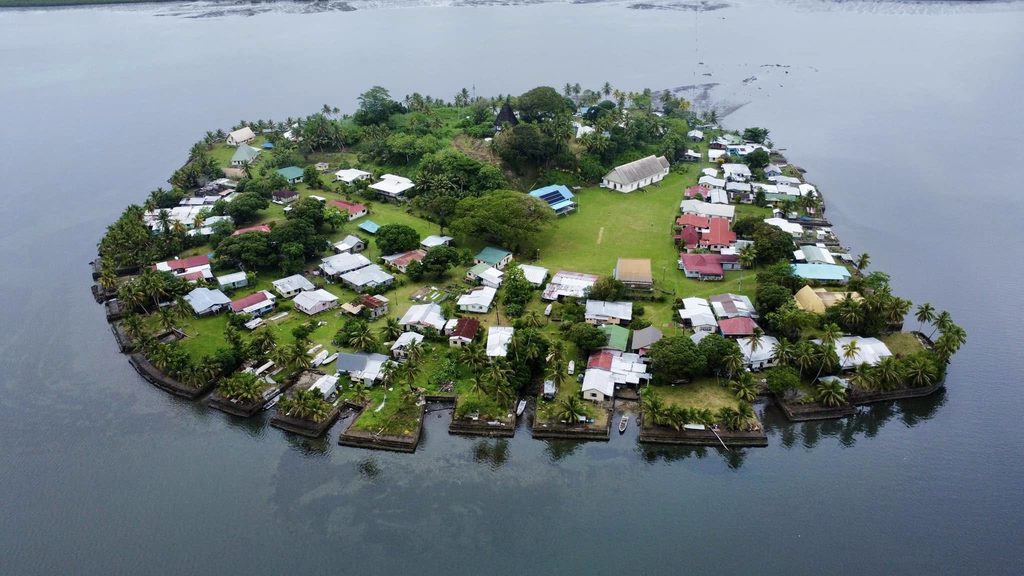Embroidered into the tapestry of Fiji’s chiefly history lies a story seldom told, one that links the remote island of Matuku in the Yasayasa Moala group to the rise of Ratu Seru Cakobau, the man who would one day unite Fiji under one rule.
The connection, immortalised in the name Mata-i-Welagi, now the chiefly residence of the Gone Turaga na Tui Kaba, paramount chief of Kubuna, is more than a name. It is a living memory of exile, refuge, and gratitude; a story of survival and loyalty that shaped the destiny of Fiji’s most formidable leader.
A refuge from conflict
The name Mata-i-Welagi originates from a small islet called Welagi, nestled in the tranquil harbour of Matuku. Once, this serene spot was the centre of fierce battles between the island’s warriors and the feared Tongan warlord Ma’afu, who sought to expand his dominion across the Fijian islands.
Years after the Tongans’ defeat, unrest erupted within Bau. Ratu Seru Cakobau, then a young and ambitious prince, found himself at the heart of a violent conspiracy, the vere-vaka-Bau, which threatened his life. Fleeing Bau under the protection of his father, Ratu Tanoa Visawaqa, he sought refuge with a loyal group of followers.
Their first stop was Nasau Village on the island of Koro, but whispers of Bauan pursuers soon reached them. Their safety could not be assured. It was then that they looked further south, towards Matuku, an island renowned for the fearlessness of its warriors, some tracing their lineage to the fierce Vuaka Loa of Nakorotubu in Ra.
The warriors of Matuku
Matuku had long been known across Fiji as a land of formidable fighters, its reputation forged during clashes with Ma’afu’s invading forces. When Cakobau’s pursuers reached Koro and learned he had fled to Matuku, they hesitated. To enter Matuku, they knew, was to face certain death. The Bauan army withdrew, unwilling to risk battle with the island’s legendary defenders.
According to oral traditions, Matuku’s warriors had built a stronghold high upon Mount Korolevu. Hidden within its steep cliffs lay Koro’ure, a secret cave fortress designed to withstand any siege. Its only entrance, a hanging bridge suspended over a deadly chasm lined with sharp rocks, allowed entry in single file, an advantage that rendered attackers helpless.
Within, the defenders channelled fresh spring water from the mountain into the cave, creating a source they called Lasakau. In later years, Cakobau would borrow that very name for a village in Bau , a small but telling homage to the land that had sheltered him.
Lessons of war and leadership
It was in the Yasayasa Moala that Ratu Seru Cakobau came of age. Oral accounts tell of how the elders and warriors of Burotukula, the mythical name for Matuku, took the exiled prince under their protection and tutored him in the ancient arts of war, diplomacy, and chiefly conduct.
The training followed the old veiwekani networks of Fiji’s ancient war alliances. From the fortress of Naikawakawavatu between Cakova and Vadra, a decision had been made: Cakobau would be sent to Keteira Village, once a great seat of learning and chiefly authority in Moala. The choice was not random, it was veitauvutaki, kinship calling to kinship.
Through the Tui Ketei of Totoya, the Tui Yaroi of Matuku, and the chiefs of Levukaidaku, Makadru and Qalikarua, the Bauan prince was tied by blood to the Yasayasa Moala chiefly clans. These were not distant relations but allies whose families had fought and intermarried for generations, linking the maritime islands to the highlands of Colo Viti Levu through shared ancestry and warfare.
In Keteira, ten tawake, masters of warfare, chiefly protocol, and spiritual discipline, were appointed as his instructors. They trained him in every art of leadership: close combat, canoe warfare, political strategy, psychological warfare, and alliance-building. They taught him valavala vakaturaga (chiefly conduct), cakacaka (the work of ruling), and ivalu (the craft of war).
When his education was complete, the Tawake accompanied him to Matuku to continue his tutelage. They would not leave him until he was ready, not just to return to Bau, but to conquer it.
Return of the prince
When peace finally returned to Bau, Ratu Cakobau was escorted home by the chiefs and warriors of Matuku. Prepared to fight if challenged, their presence alone was enough to silence any opposition. The young prince, once hunted and in hiding, now returned as a leader forged in exile and tempered by the teachings of Matuku’s greatest warriors.
Views of home, views of comfort
During his years in exile, Cakobau often sat beneath a tree on a hill overlooking Matuku Harbour, gazing out at the small islet of Welagi. Perhaps, in its quiet beauty, he saw a reflection of Bau, a reminder of home and hope. That serene image, the people said, was Mata-i-Welagi, meaning “facing Welagi” or “gaze fixed upon Welagi”.
A tribute immortalised
After reclaiming his chiefly authority, Ratu Seru Cakobau never forgot the island that gave him sanctuary. As a tribute to the warriors and chiefs who had sheltered and taught him, he named his chiefly residence Mata-i-Welagi.
To this day, the name stands not merely as a marker of place, but as a symbol of gratitude, a lasting link between Bau and Matuku, between a young chief’s peril and an island’s protection.
Through Mata-i-Welagi, the story of a small islet in the Yasayasa Moala endures, woven forever into the legacy of Fiji’s first unifier, a reminder that even the mightiest of leaders once found strength in the refuge of others.
History being the subject it is, a group’s version of events may not be the same as that held by another group. When publishing one account, it is not our intention to cause division or to disrespect other oral traditions. Those with a different version can contact us so we can publish your account of history too — Editor.



